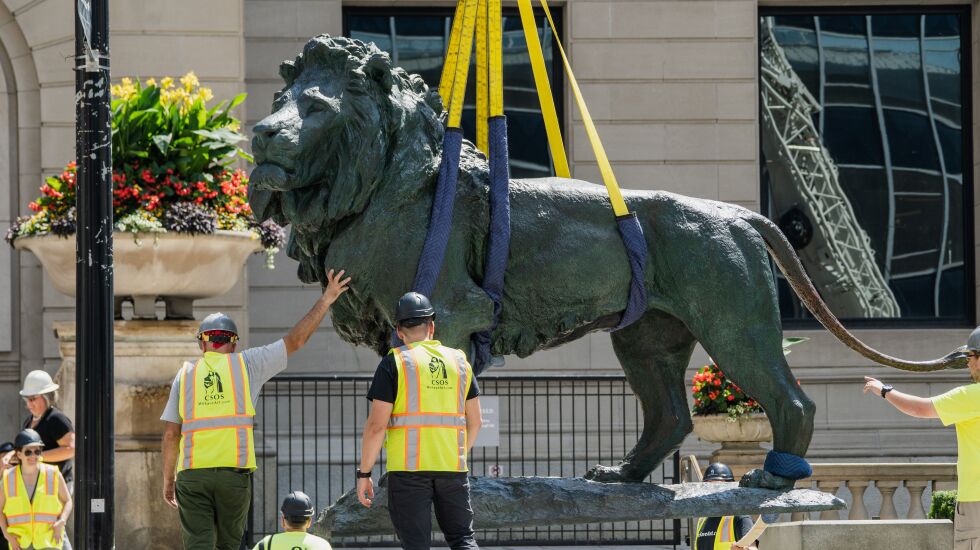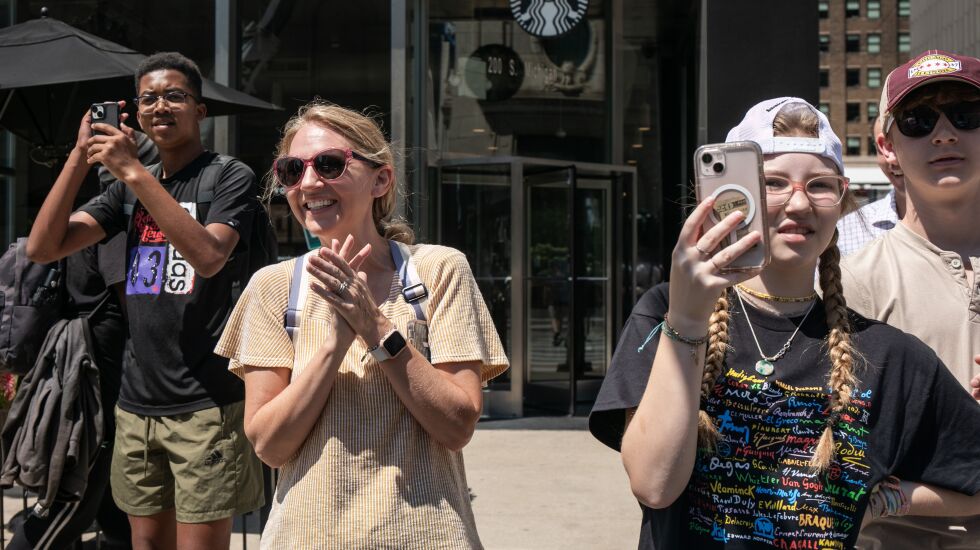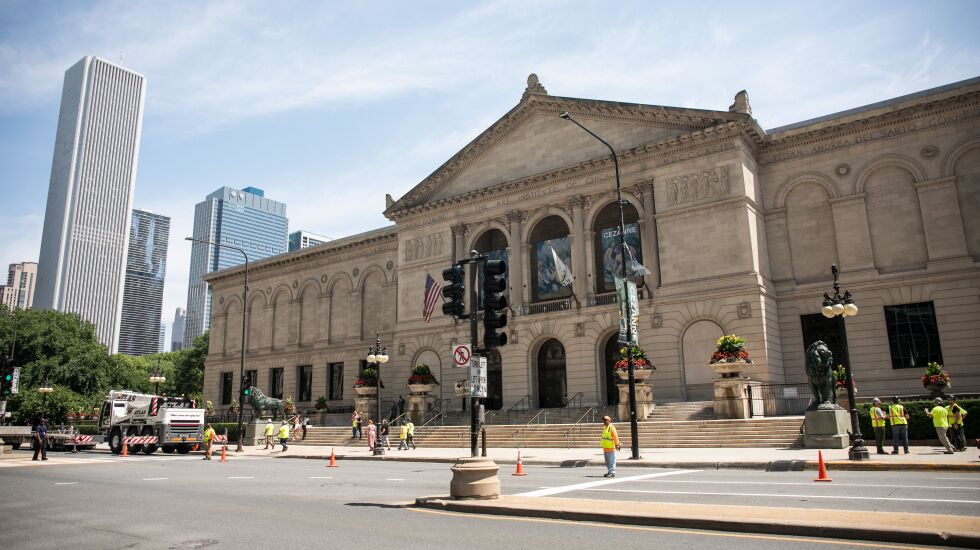
The Art Institute of Chicago’s iconic bronze lions returned to their pedestals Tuesday after getting their first deep-clean in nearly 21 years.
After spending a month in Forest Park getting steamed and treated with wax, the pair were returned shortly after noon to their home outside the museum via flatbed truck and placed back on the perches they’ve occupied along Michigan Avenue almost uninterrupted for nearly 130 years.
But with the sculptures — which were first unveiled during the museum’s inaugural year — weighing between four and five thousand pounds, moving them is no small task.
“Moving something that huge — and the fact that they’re such a symbol of Chicago and of the museum — it feels like an enormous responsibility,” said Rachel Sabino, the Art Institute’s director of objects and textile conservation.

Sabino was in charge of overseeing the cleaning, which she said will last them for many years when paired with additional, smaller wax treatments that will be made to the sculptures “as needed.”
Sabino said cleaning the lions was rewarding; not only did she get to contribute to their preservation, she also got to see how many people had their own “personal histories” with the big cats.
Among the onlookers Tuesday was a 72-year-old grandmother who said she remembered her parents taking her to the museum when she was a toddler — a trip she had re-created in the years since for her own children and their children.
Paula, who now lives in Wisconsin and declined to give her last name, said the lions “are always a highlight” of the trip.
Others were just happy to see the museum returned to normal.
The building looked “unnatural” and “naked” without the giant creatures guarding the steps, lifelong Chicagoan Howard von Nichols observed.
“When you see the Art Institute and the lions are gone, something is just wrong,” he said.
Along with the lions, two time capsules they’ve been guarding were also returned. One is from a cleaning in 2001, but the other is “much older,” Sabino said.
The south lion had Indian head pennies — coins minted between 1859 and 1909 — tucked underneath it, which were also replaced when the lions were put back.
The bronze beasts were made for the 1893 Columbian Exposition by Edward Kemeys after being commissioned by Florence Lathrop, the sister-in-law of Marshall Field. In 1894, Lathrop asked that they be placed on the steps of the building in honor of her late husband, Henry Field.

Despite their status, not everyone in the city was aware of the spectacle, which shut down a lane of Michigan Avenue.
Bobby Pitts, a 33-year-old former suburban resident, said he happened upon the reinstallation while he was in the area filming a project.
Pitts said he thought they looked “shinier,” but quickly added that the “beautiful Chicago summer day” may also have contributed.







